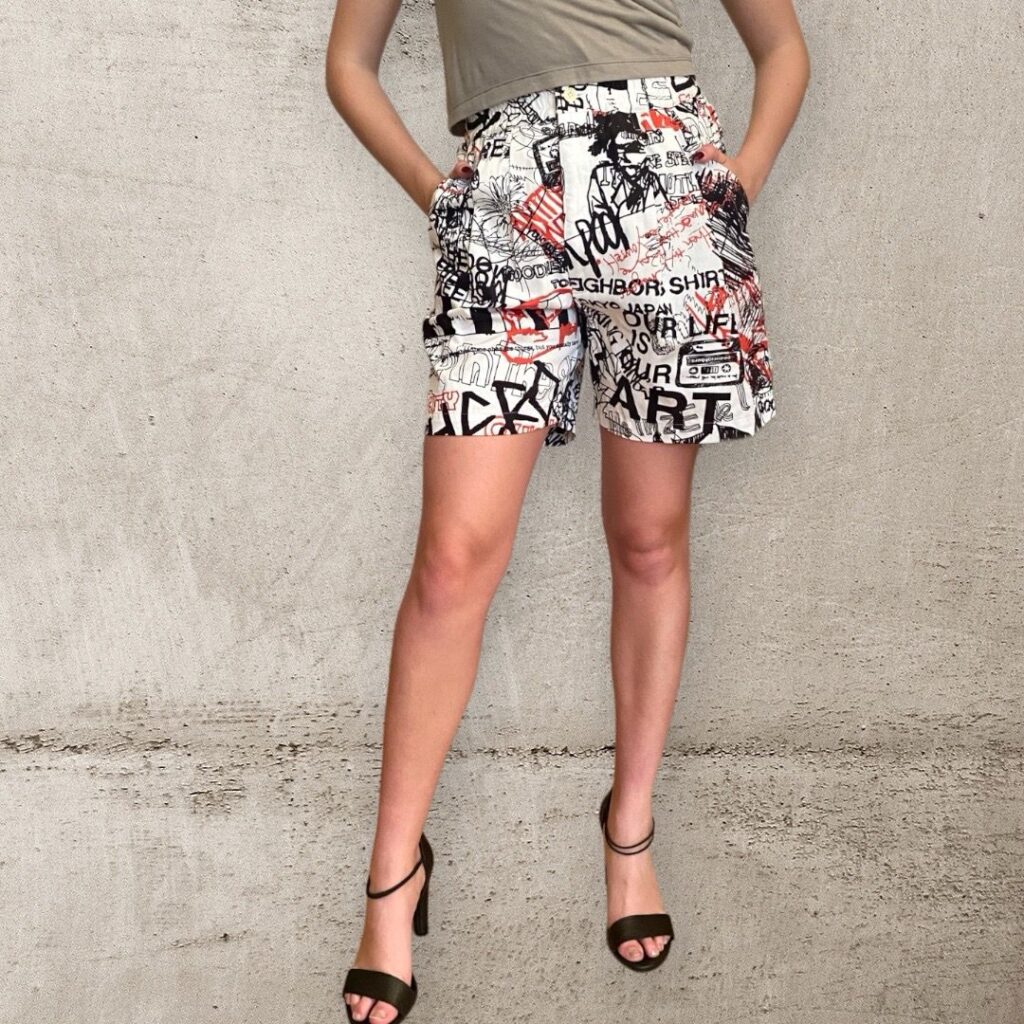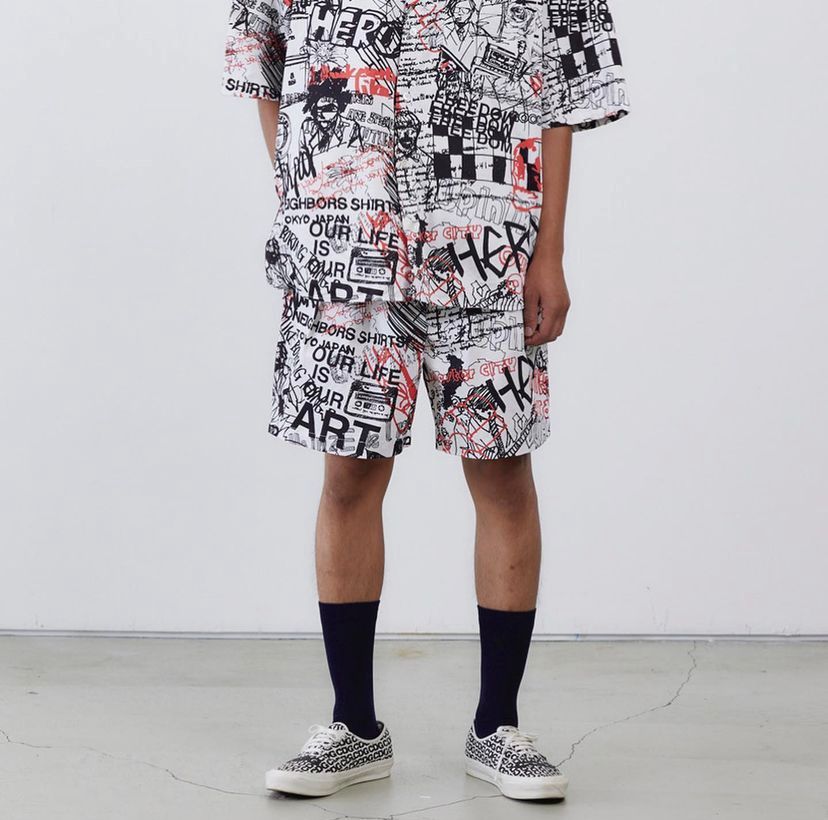The Burning Patterned Shorts
Exclusive Japanese Fashion #ForModernHumans
Introducing The Burning Patterned Shorts by GoodNeighbors Shirts from Tokyo, Japan – our top pick of the week!
GoodNeighbors Shirts masterfully blends art, music, and style into its design vision, creating fashion pieces that exude both beauty and comfort.
These shorts, with their unique hand-drawn print, perfectly capture this ethos. Two inspiring phrases stand out: “Our life is our art” and “In my mind dreams are real,” making these shorts not just a fashion statement, but a wearable piece of art.
Garment values: timeless, genderless, comfortable, easy-care.
Discover The Burning Patterned Shorts
About the design
The Burning Patterned Shorts feature front pleating, two side pockets, a back pocket, a zippered front closure, and tiny side slits for added style and comfort. The standout element is the original all-over pattern, printed with messages inspired by the music and art movements of the 1970s, all hand-drawn by the designer himself. The shorts are crafted from soft and durable twill, ensuring longevity and comfort.

About the material
100% cotton.
About the colour
The shorts boast a white base adorned with a striking multi-black and red hand-drawn print.
Laundry
Wash by hand. Easy care product.

Styling tips
The Burning Patterned Shorts are a distinctive addition to your summer style. For an elegant image, pair them with a white shirt and black shoes, whether heels, loafers or lace-ups. For a chic occasion, try them with The Lace Top by Marc Le Bihan. But for a casual and laid-back look, team them with a simple black tee and white sneakers.
How to purchase our selection:
Head to our Instagram account to discover our shop (link in bio)!
Drop us an email or WhatsApp for orders or any further information. Also, you can book your private shopping experience in person or via video call.
International Shipping!
From Milano, our fashion selection #formodernhumans is available for international delivery.
Exclusive Fashion
🖤 Our selection intentionally offers limited pieces to ensure uniqueness and a sustainable approach.
Further details, size advice and prices via →WhatsApp
● Please get in touch with us for size guidance before purchasing.
🛍 Treat yourself today! Get yours directly from the suite123 shop!
The Burning Patterned Shorts Read More »
